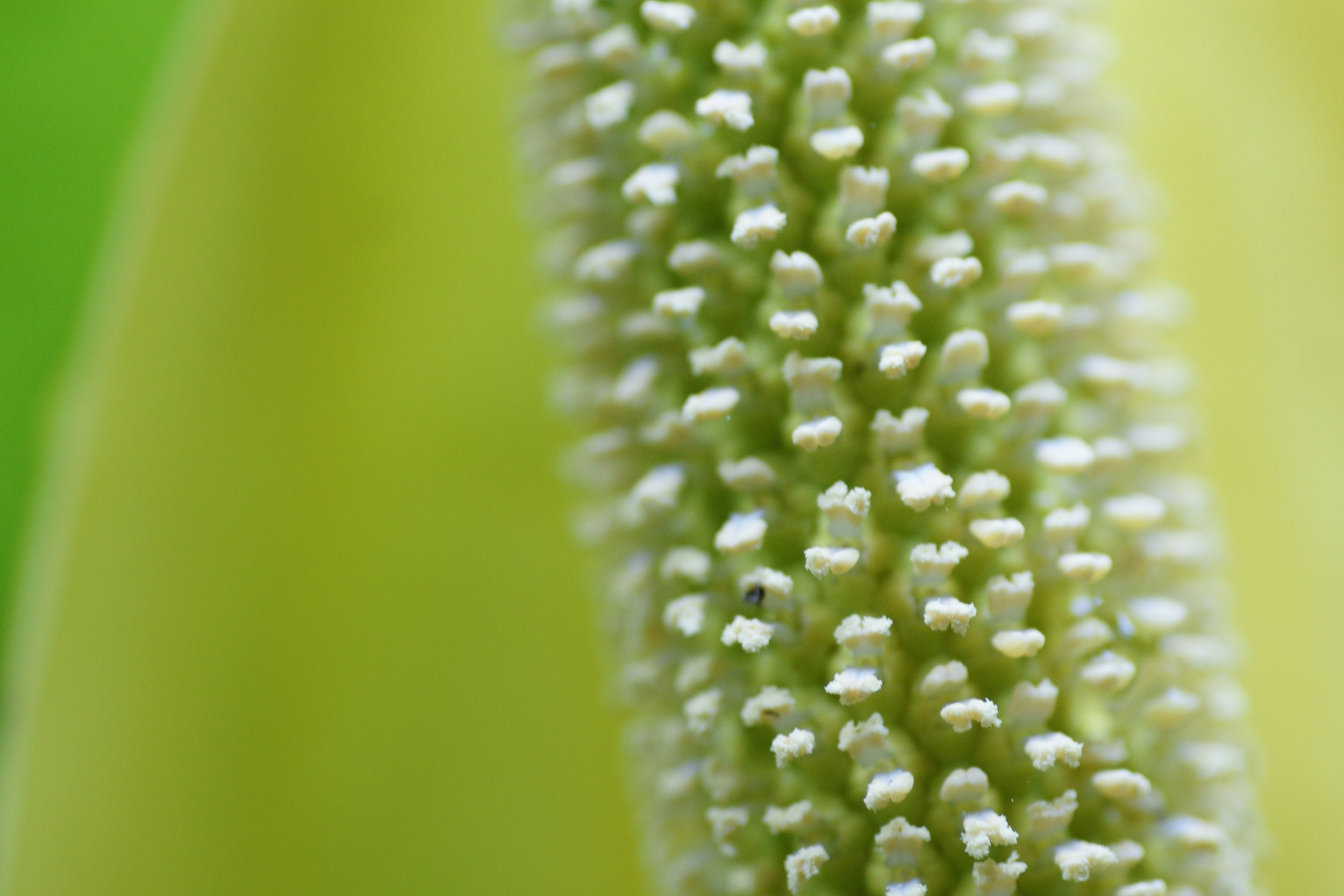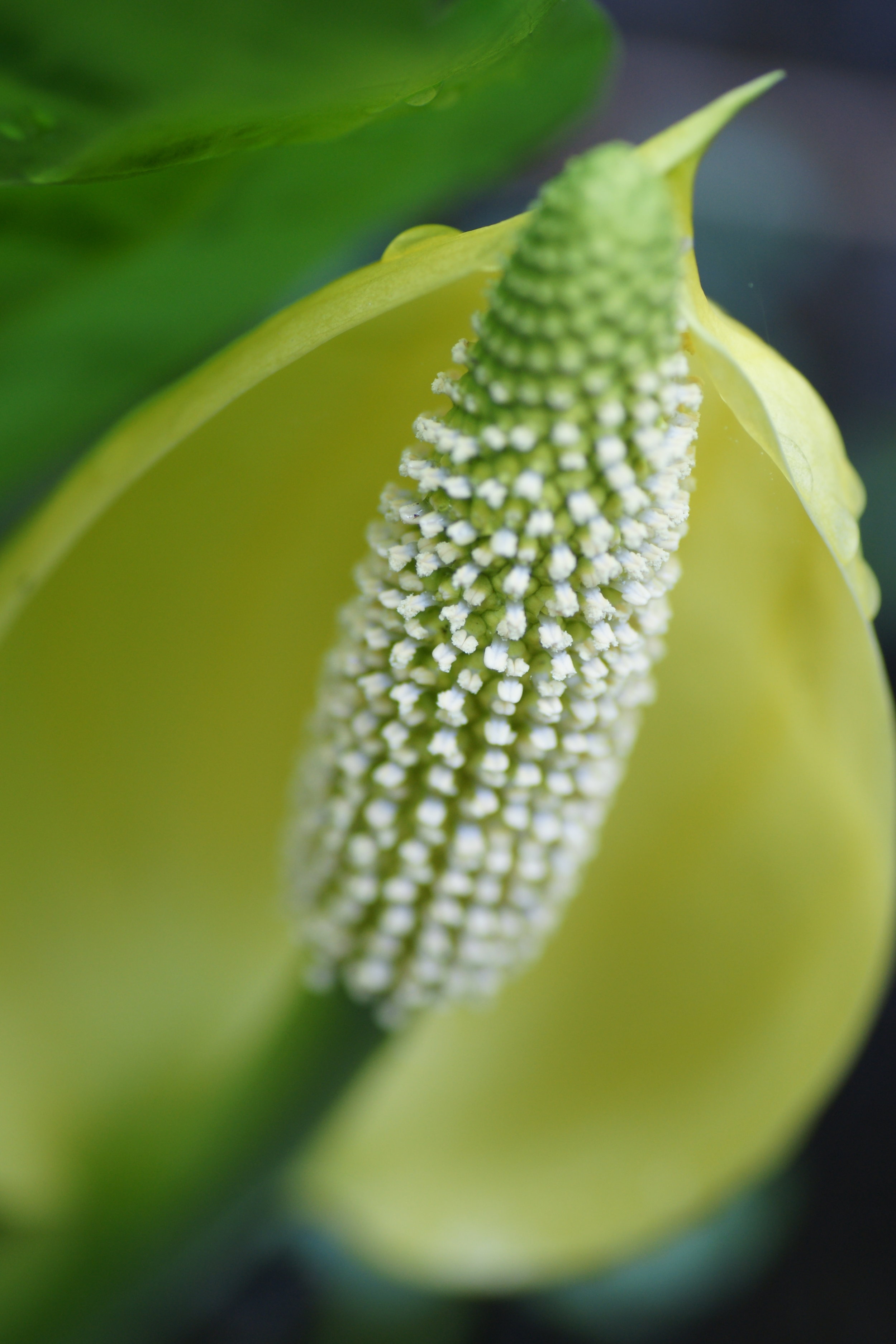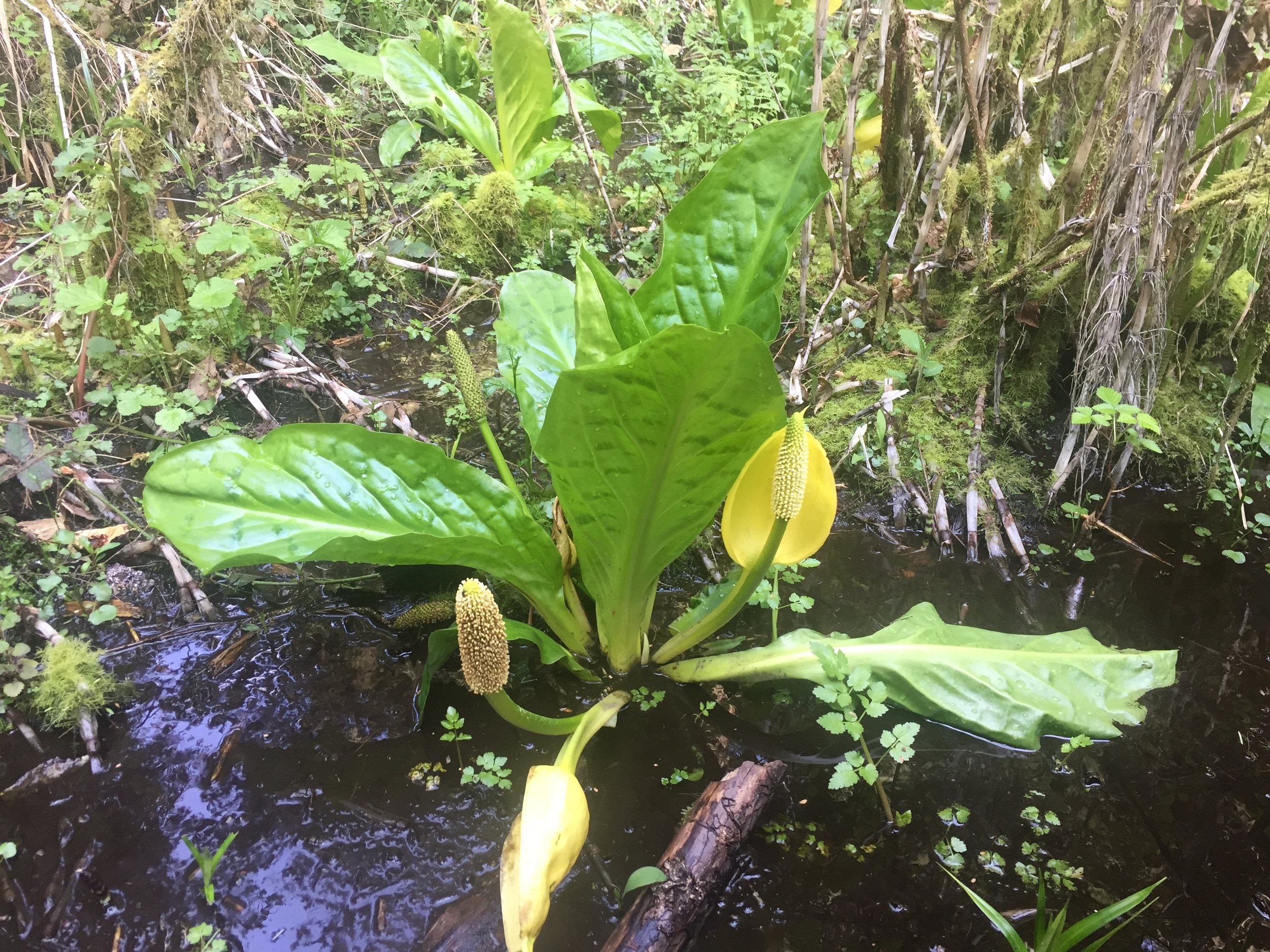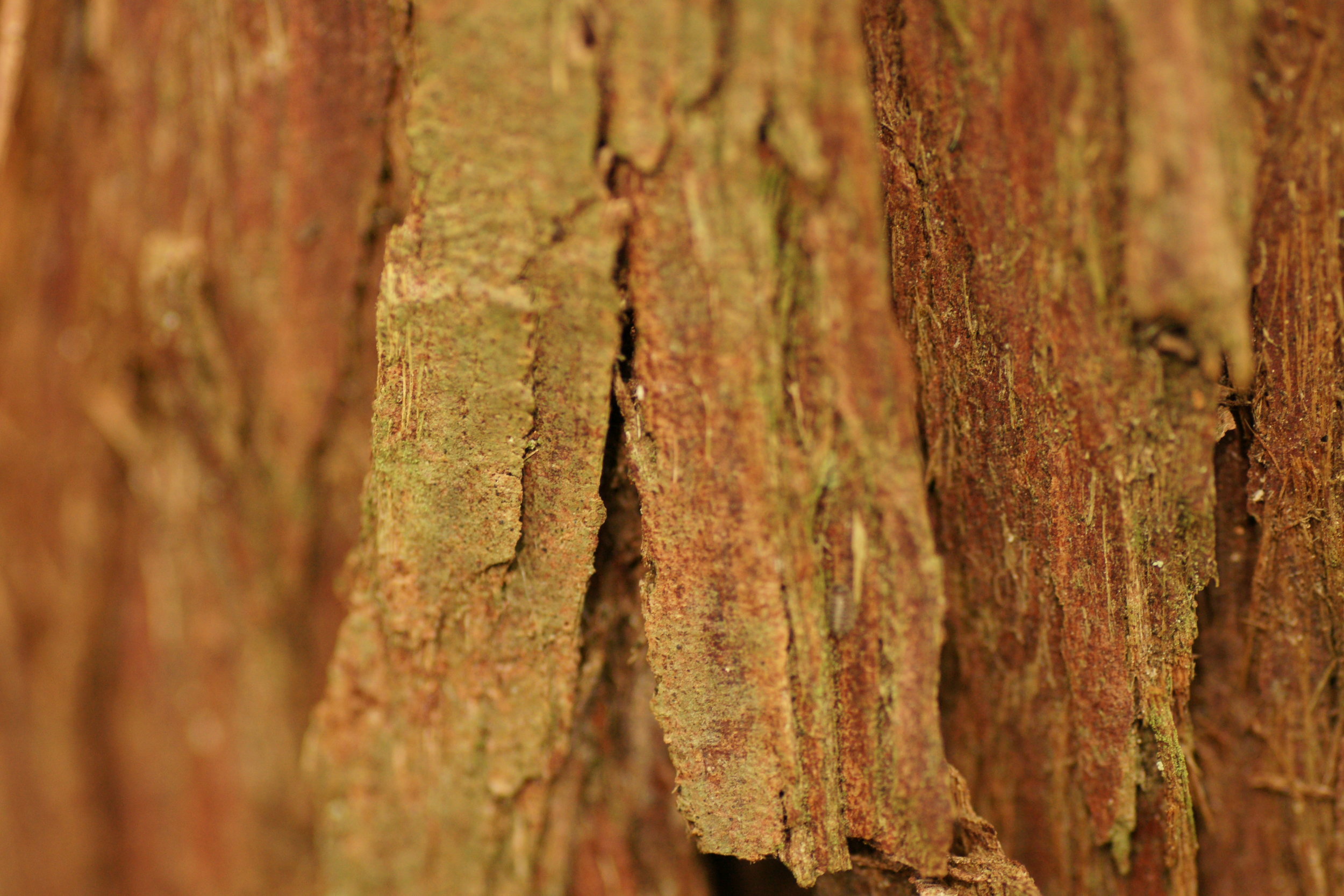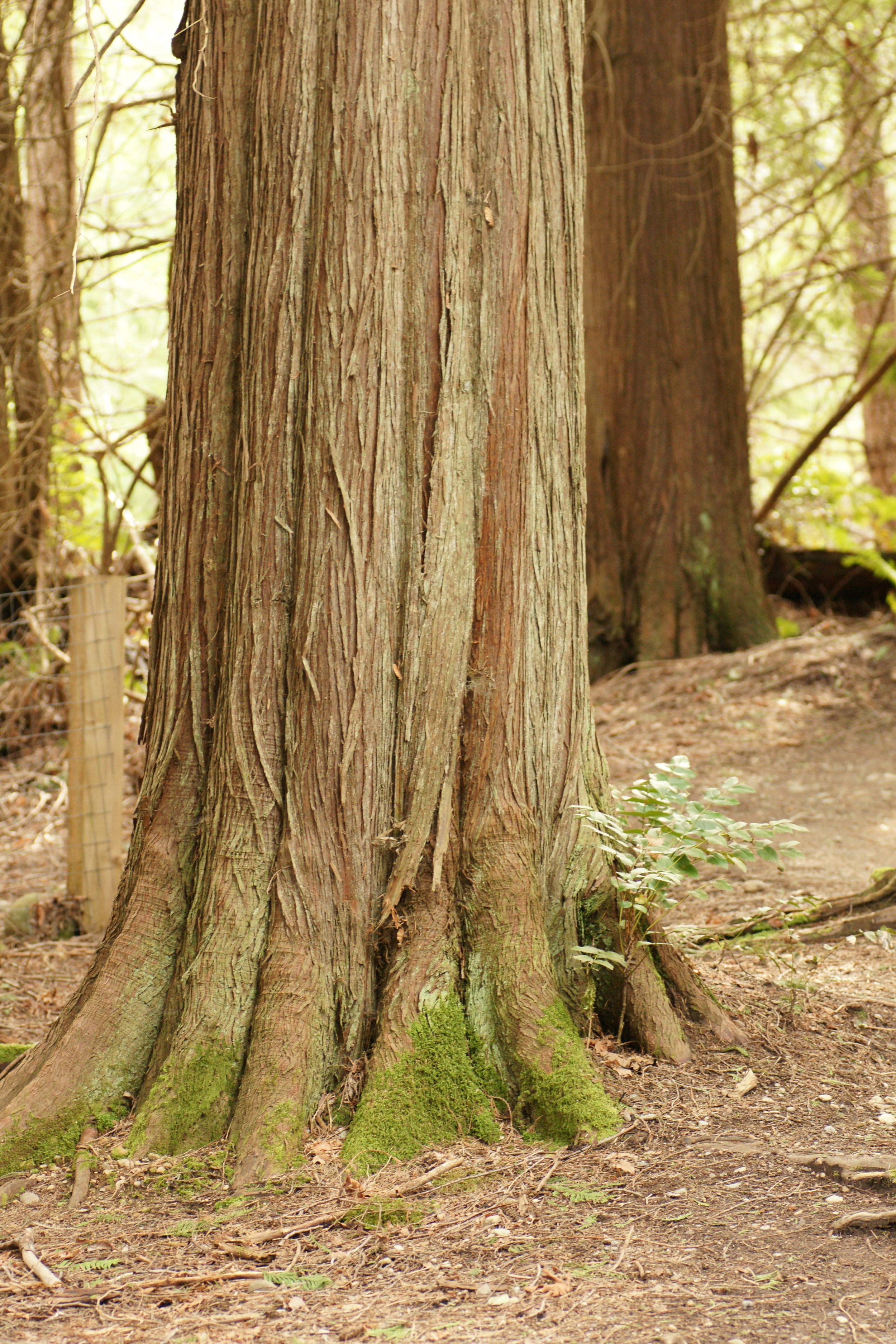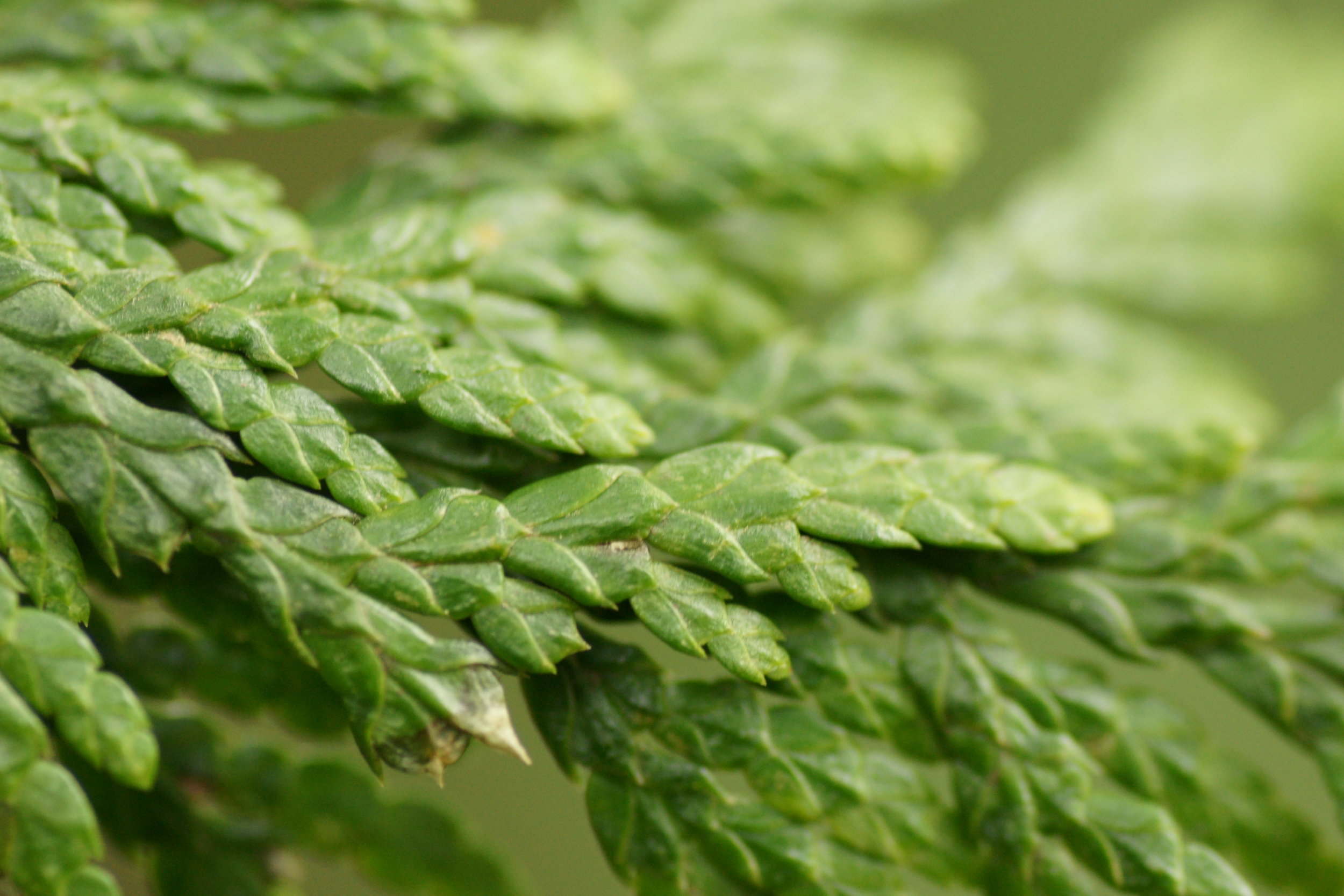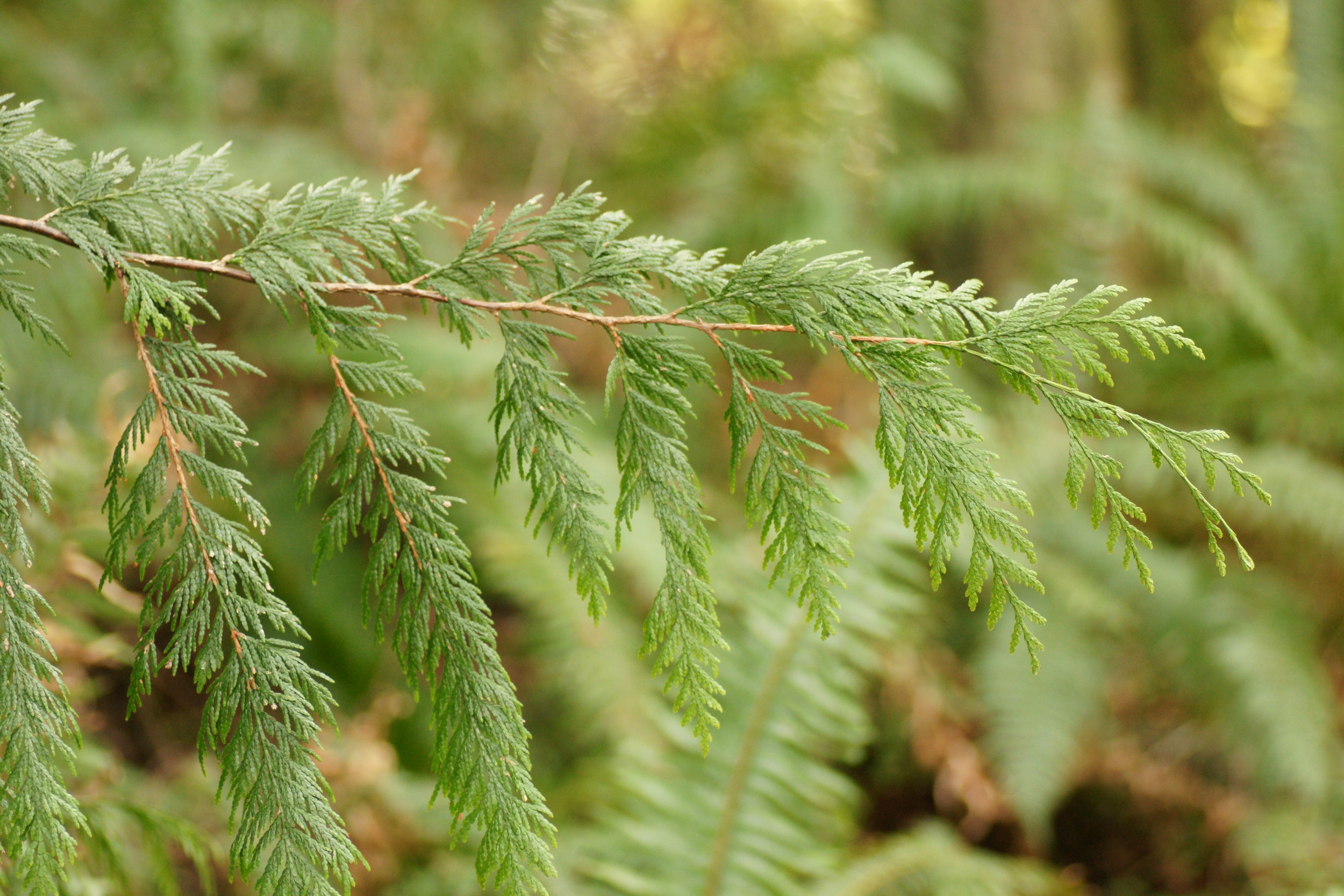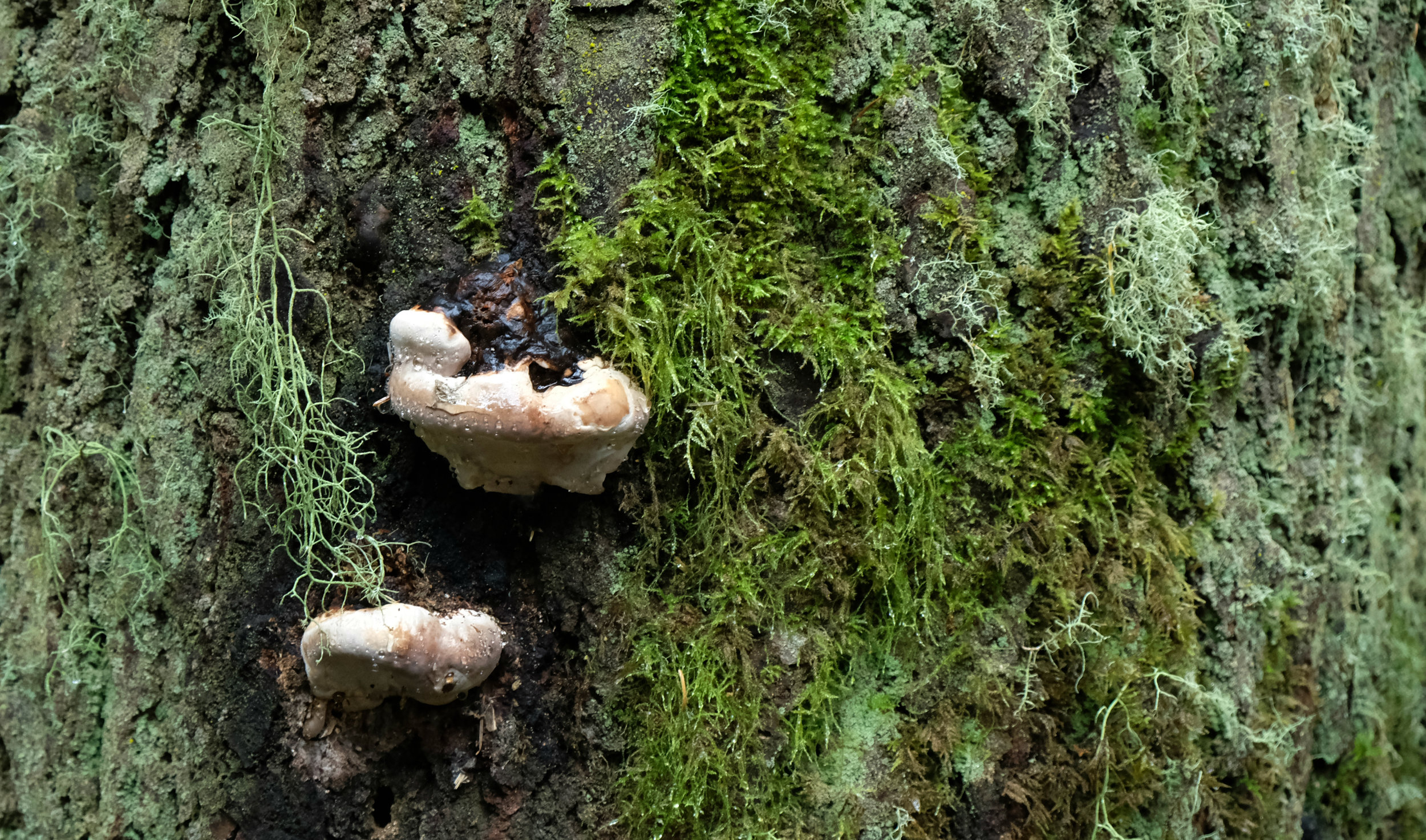It’s said that someone often “can’t see the forest for the trees” — in a sense, that we become so mired in the details that the big picture is out of view. Walking through the woods in Western Washington, though, we learned that sometimes those details are essential to telling the broader story.
We took some close-up shots of individual elements that, when explored as a whole, reveal a healthy ecosystem. Check out the images below and see if you can identify what you’d see if you took a few steps back. Then click the right arrow on each to see if you are correct! (Answers at the bottom of this post.)
Do you have some extreme close-ups of your own? Upload your own nature macrophotography in the form at the bottom for the chance to be featured on our blog!
A: The spadix of a western skunk cabbage, common to boggy areas and one of the first spring blooms in Western Washington. (Photo by Grant Kidd)
B: Cedar bough; C: Cedar bark
In many areas, Western red cedars are essential elements of old-growth forest conditions. Their presence among other native trees is indicative of ideal habitat and wildlife diversity. These trees can live over 1000 years and have diameters over 12 feet! Old-growth forests provide a glimpse into the past and a guide for restoration. (Photo by Grant Kidd)
D: Moss species taken at Whatcom Falls growing on cement piping. A hearty pioneer! (Photo by Nikolaj Lasbo / TNC)
E: A species of ganoderma fungus taken at Deception Pass State Park. (Photo by Anna Snook)


